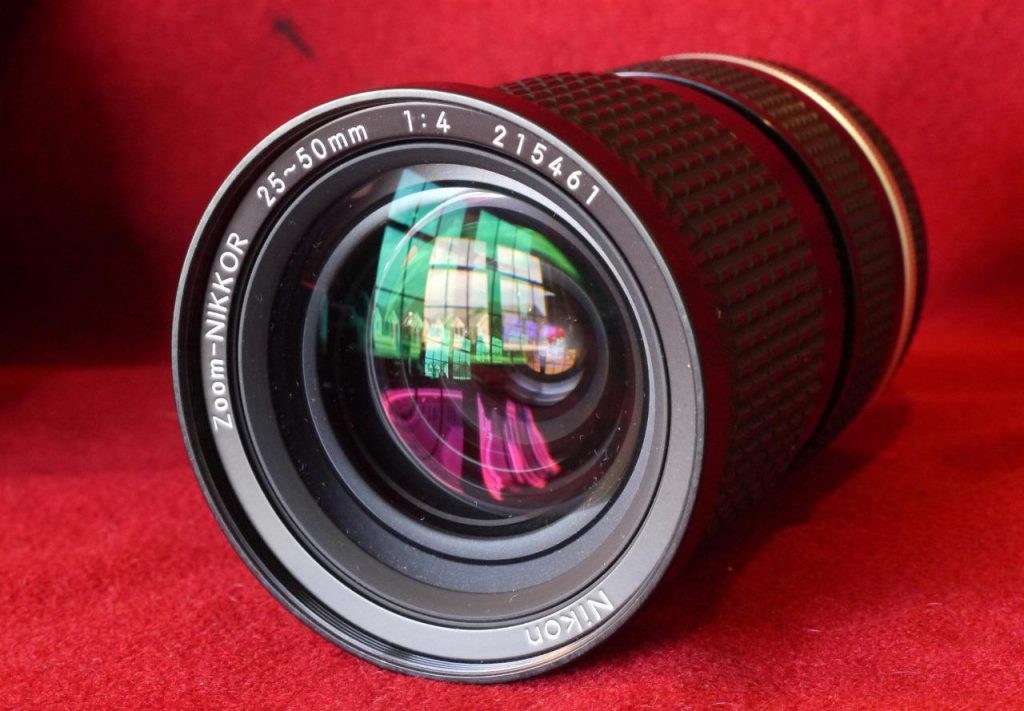Repairs usually begin with an e-mail where the customer describes his camera and what they think the problem is and an inquiry as to cost and turn-a-round time. After several e-mails, they are ready to send the camera. Often though, the camera arrives without anything in the box except the camera… no name, letter, address, or particularly, e-mail address. When you send a camera, please include a description of the problem and your e-mail address. Please also realize that the turn-around time can be as much as 8 weeks. Fortunately most customers are very good about that. However, if you must have the camera back by a certain time because of vacation or whatever, I will usually try to expedite things.
When I CLA (Clean, Lubricate, and Adjust) a camera, it involves a strip-down of the camera, especially the viewfinder/rangefinder, bellows, transport mechanism, lens, and shutter. These are then cleaned. The principle “tool” for cleaning a lens, aside from disassembly, is optical cleaning fluid, lens cloths (from ZEISS), and Q-tips. Q-tips are an important tool and there’s really no substitute. However, on occasion customers have e-mailed me after receiving their camera back and having actuated the shutter several times, that they have noticed “fibers” in the lens. Unfortunately, this does happen on occassion that after cleaning (which includes high pressure air blowing), those pesky fibers remain hidden in the lens and rise after the customer receives their camera back. This is a simple thing to remedy… just send the camera back and I’ll take care of it. As I said, this happens, but thankfully not very often. If it does, don’t get bent out of shape… it’s an easy fix. The CLA of a shutter involves disassembly and cleaning with a caustic solution in an ultra-sonic bath to remove the 55+ years of accumulated dirt (no, I haven’t used the doggie dish for a long time !). There are a few websites and postings that advise cleaning the shutter in “lighter fluid!!” Everytime I read that I do a little cringe!!! The truth is that lighter fluid is meant to light cigars and cigarettes – not to clean shutters or watches! Just bathing in the lighter fluid does loosen some the dirt, true, but only for a while until the fluid dries and the dirt is still there and the shutter is back to where it was before you began. Back in the old days, my dad used to use lighter fluid “regularly” to clean his watch… I say “regularly” because it really didn’t clean the watch – it just loosened/softened the dirt for a while until the next bath. The simple matter is that the dirt must be removed from the mechanism. A bath doesn’t do it – it’s like getting in the bathtub without a washcloth!
Following the bath, any mechanical adjustments necessary are made. Lastly, I usually run the shutter through the electronic shutter tester – particularly the Compur, Compur-Rapid, and Synchro-Compur shutters. The Prontors on occasion, but these shutters are always so accurate after the CLA that running them through the shutter tester has proven to be redundant. I usually do not write down the tested shutter speeds from the shutter tester unless the customer specifically requests it.
Cleaning lenses is often pretty straightforward. Disassemble the elements and clean them individually with Zeiss optical cleaning fluid and optical cloth… I only use Zeiss cloths. Sometimes though, especially on Agfa Apotars and Solinars (though it happens with all makes) the coating is so light (or old) that a simple wipe will remove some of the coating and the lens then looks bespeckled (very disconcerting when that happens). Luckily it doesn’t happen often, but it DOES happen. If it’s one of my cameras, I usually then throw the lens away as it is not “sellable,” even though it is still perfectly fine for taking pictures. People just don’t like to see the speckles even though the film doesn’t see them. If it’s a customer’s lens, I replace it if I have a spare, but usually it’s… well, shit happens. I had a customer this past week who had sent me his Super Ikonta IV with a nice looking f3.5/75mm Tessar. Looked good until I cleaned it and upon reassembly I noticed a ring that looked like a film of some sort – perfectly round – on the rear element. Looked like it could be just cleaned off. Tried the optical fluid and lens cloth cleaning method, but it wouldn’t come off. Turns out it’s a mild separation (the rear lens element of the Tessar is a lens group , not just an “element” – it’s two lenses cemented together). The customer intimated that the lens looked worse than when he sent it for service. Well, yes…with a “clean” lens, you could NOW see the separation!!! However, here again, in actual practice it is highly unlikely that the separation will be noticed in your pictures.
While the overwhelming major of my repairs work is on medium format folders, I do also work on classic 35mm folders from Voigtlander, Agfa, Balda, Kodak, Certo, and a few others.
